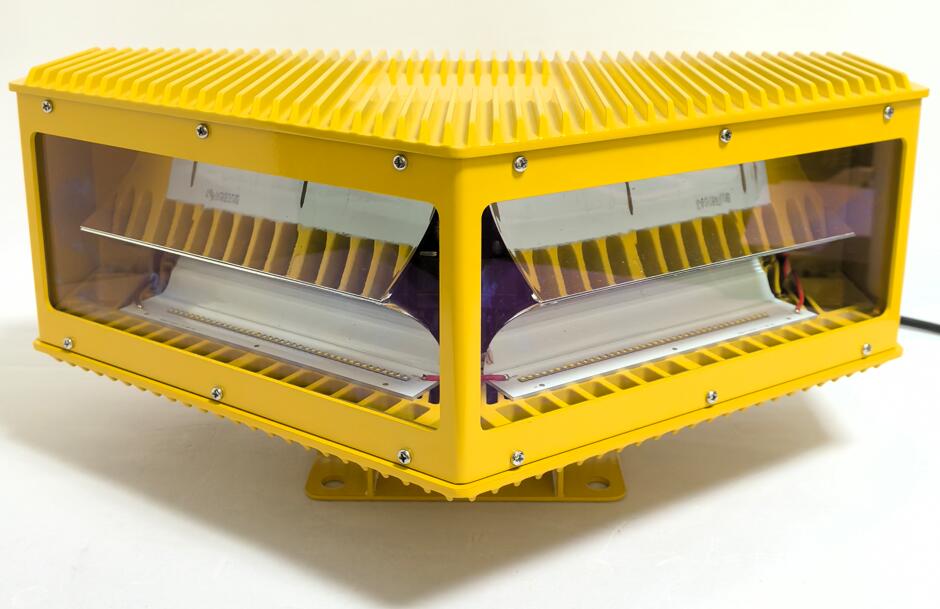Light Obstruction Management: Enhancing Visibility in Modern Infrastructure
In the rapidly developing world of vertical construction and dense urban landscapes, the term light obstruction takes on a critical role in safety, regulation, and engineering. It refers to any physical structure or environmental factor that interferes with the transmission or perception of light — particularly for the purpose of ensuring visibility to aircraft and vehicles. More specifically, in aviation and infrastructure, light obstruction involves the proper marking and illumination of tall or potentially hazardous structures that could pose threats to navigational systems or human safety.
This article explores the importance of light obstruction management, its applications, regulatory context, and emerging technologies that continue to reshape how we illuminate hazards in modern environments.

Defining Light Obstruction in Safety Contexts
Light obstruction has two meanings in safety-critical industries. First, it can refer to the physical blocking of light by an object—such as a building, crane, or tree. Second, it refers to the lighting systems designed to mark such obstructions to make them visible to aircraft or vehicles, particularly during low-visibility conditions such as nighttime or fog.
In aviation, construction, and transportation, light obstruction solutions are installed on structures that could interfere with airspace or traffic flow. These include:
Communication towers
Wind turbines
High-rise buildings
Transmission lines
Industrial chimneys
Cranes and bridge segments
When these structures reach certain heights or are located near navigable airspace, aviation authorities require them to be lit with obstruction lighting systems for safety and visibility.
The Importance of Light Obstruction in Aviation
The Federal Aviation Administration (FAA), International Civil Aviation Organization (ICAO), and similar regulatory bodies worldwide mandate obstruction lighting for structures that could impact flight safety. A failure to install adequate light obstruction systems can result in serious risks, including:
Aircraft collisions with unlit or poorly lit structures
Loss of visual awareness for pilots during takeoff and landing
Increased danger for low-flying helicopters, especially in urban zones
Violations of airspace safety regulations
Properly managing light obstruction ensures that hazards are clearly visible, reducing the risk of mid-air incidents and preserving the integrity of controlled airspace.
Categories of Light Obstruction Systems
Light obstruction systems can be divided into several categories, primarily based on intensity, color, and operational timing:
Low-Intensity Lights
Typically used on structures below 150 feet, these emit a steady red light and are visible at night.
Medium-Intensity Lights
These lights flash white or red and are suitable for structures ranging from 150 to 500 feet.
High-Intensity Lights
Designed for structures above 500 feet, these flash white and are visible both day and night.
The choice of light obstruction system depends on factors like structure height, location, and surrounding environmental conditions.
Key Components of a Light Obstruction System
An effective light obstruction system includes the following elements:
Light Fixtures: High-intensity LEDs or xenon-based lights that emit either steady or flashing signals.
Controllers: Units that manage timing, flash rate, and switching between day and night modes.
Photocells: Sensors that detect ambient light levels and trigger the appropriate lighting condition.
Power Supply: Electric or solar-powered systems depending on the installation site.
Monitoring Units: Devices that report light failure or operational status to centralized systems.
These components work together to ensure uninterrupted visibility of obstructions, even in remote or rugged areas.
Light Obstruction in Urban Planning and Architecture
Beyond aviation, light obstruction is a growing concern in urban development. As cities become denser and buildings taller, the obstruction of natural light—whether from other structures or environmental design—affects quality of life and safety.
Examples include:
Shadow casting over neighboring buildings
Interference with solar panel efficiency
Blocking views and contributing to visual pollution
Compromising visibility on roads or pedestrian pathways
Urban planners now integrate light obstruction analysis into architectural design, using simulation tools to model sun paths, reflection, and visibility before construction begins.
Challenges in Light Obstruction Management
Despite the availability of advanced systems, managing light obstruction presents several challenges:
Environmental Conditions
Harsh weather, such as snow or fog, can limit light transmission or damage fixtures.
Remote Locations
Towers and wind turbines are often situated in isolated areas, making maintenance and monitoring difficult.
Power Availability
Some sites lack access to electricity, requiring solar-powered or hybrid solutions.
Compliance Monitoring
Keeping up with evolving FAA or ICAO regulations requires continuous attention to system performance and documentation.
Overcoming these challenges demands the use of robust, automated systems that reduce human intervention and increase reliability.
Technological Trends in Light Obstruction Systems
As the industry evolves, several innovations are transforming how we manage light obstruction:
LED Technology: Offers improved brightness, longer lifespan, and reduced energy consumption compared to traditional bulbs.
Smart Monitoring: Real-time diagnostics allow for predictive maintenance and alert systems.
Solar Integration: Enables deployment in off-grid locations with high reliability.
Radar-Activated Lighting: Reduces light pollution by turning on lights only when aircraft are detected nearby.
Modular Design: Simplifies installation and replacement, especially in high-risk areas.
These advances make it easier to maintain compliance and enhance overall safety.
Global Standards and Harmonization
Different countries maintain their own regulations on light obstruction, though global efforts exist to harmonize these standards:
FAA (U.S.)
ICAO (International)
EASA (Europe)
CASA (Australia)
DGCA (India)
While specifics may vary, most follow similar principles regarding height thresholds, light color, and operational timeframes. International projects must often comply with multiple agencies’ standards, especially for wind farms and tall towers that span national borders or lie near airports.
As infrastructure grows taller and denser, the importance of managing light obstruction cannot be overstated. Whether to enhance flight safety, support sustainable design, or comply with regulatory demands, obstruction lighting is a crucial tool in the modern built environment. By embracing LED technology, integrating smart systems, and aligning with global standards, industries can ensure that their structures remain visible, compliant, and safe in the skies above and the streets below.
